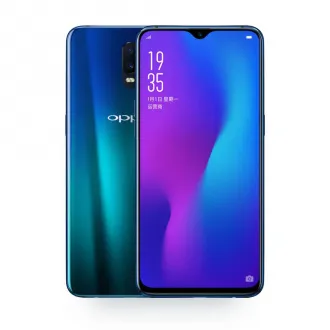Oppo R17 USB Drivers will help your Windows computer recognize your Android device. Then you can transfer files from computer to Android or even install the stock or custom ROM to your Android device.
Brand: Oppo
Model: R17
Release date: August 2018
Form factor: Touchscreen
Battery capacity (mAh): 3500
Fast charging: VOOC
Colours: Streamer Blue, Neon Purple
Display
Screen size (inches): 6.40
Touchscreen: Yes
Resolution: 1080x2280 pixels
Aspect ratio: 19:9
Pixels per inch (PPI): 374
Hardware
Processor: octa-core (2x2GHz + 6x1.7GHz)
Processor make: Qualcomm Snapdragon 670
RAM: 8GB
Internal storage: 128GB
Expandable storage: No
Camera
Rear camera: 16-megapixel (f/1.8, 1.22-micron) + 5-megapixel
Rear autofocus: Phase detection autofocus
Rear flash: Dual LED
Front camera: 25-megapixel (f/2.0)
Software
Operating system: Android 8.1
Skin: ColorOS 5.2
Connectivity
Wi-Fi: Yes
GPS: Yes
Bluetooth: Yes, v 5.00
Micro-USB: Yes
Headphones: 3.5mm
Wi-Fi Direct: Yes
Sensors
Fingerprint sensor: Yes
Proximity sensor: Yes
Accelerometer: Yes
Ambient light sensor: Yes
Gyroscope: Yes
Step 1 — Download and extract the Android USB Driver to your PC.
Step 2 — Click Start (Windows) -> Control Panel -> Device Manager (Select Device Manager).
Step 3 — On the Device Manager window find and click on computer name to select Add legacy hardware.
Step 4 — Select Next
Step 5 — Selext Install the hardware that I manually select from a list (Advanced), and click the Next
Step 6 — Select Show All Devices afterward click Next button again.
Step 7 — Click the Have Disk button.
Step 8 — Click Browse button to find the extracted Android ADB Driver -> android_winusb.inf and click on Open.
Step 9 — Click OK.
Step 10 — Now select the Android ADB Interface -> click Next button.
Step 11 — Click Next button again.
Step 12 — Windows Security box will appear, to confirm whether you really want to install the Android USB Driver, so just choose the Install this driver software anyway.
Step 13 — Once you clicked the Finish button, then repeat from step 2 to choose Android Composite ADB Interface.
Step 14 - Done.
